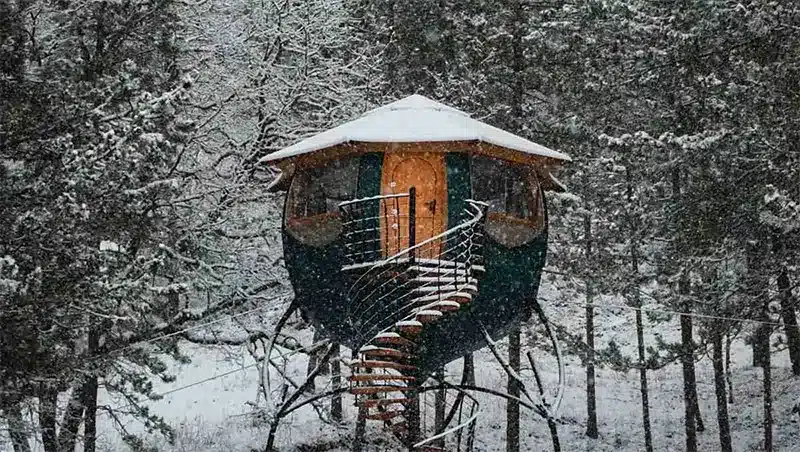Are you considering living in a tiny home but worried about how it will hold up during storms? It is only natural to have concerns about the safety of such compact dwellings when faced with severe weather conditions.
Tiny homes, when properly anchored and constructed, can be relatively safe during mild storms. However, their small size and lightweight structure make them more vulnerable to severe weather conditions such as hurricanes or tornadoes.
In this article, we will delve into the general safety of tiny homes and explore their ability to withstand both mild and severe storms. By examining the challenges they face and key safety precautions to take, you will gain valuable insight into ensuring your well-being and security in your cozy abode.
General Safety of Tiny Homes
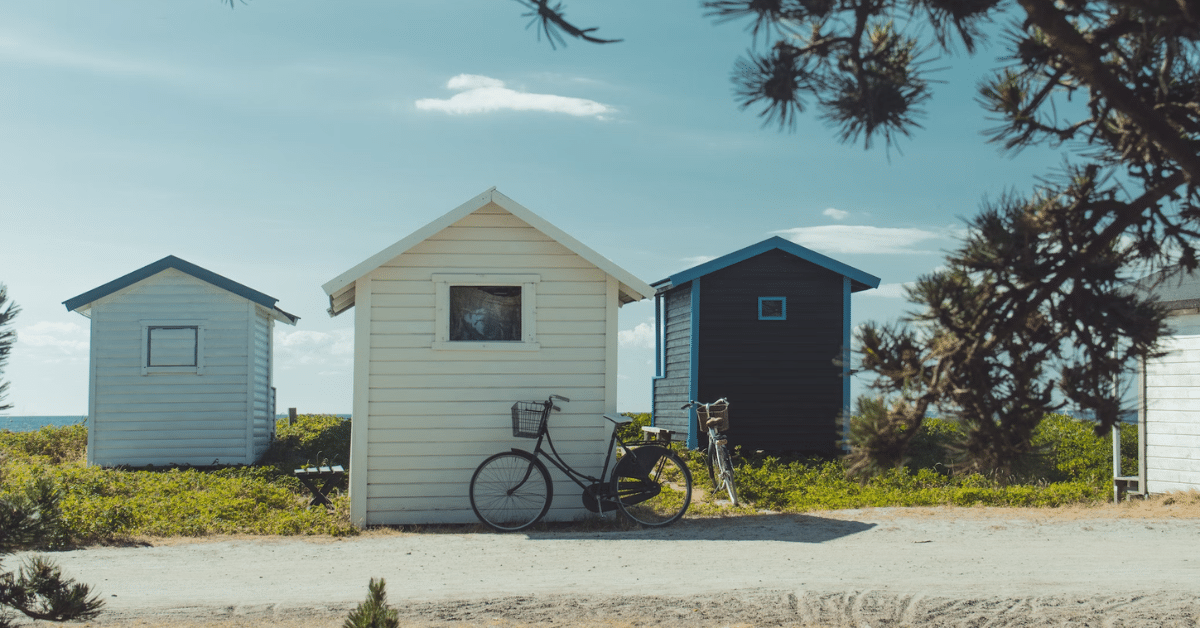
Let’s discuss the structural integrity and durability of these compact structures. It is important to consider whether they are built to withstand severe weather conditions before you pack your things and move into one.
The Structural Integrity of Tiny Homes
Tiny homes have grown increasingly popular as a sustainable and eco-friendly choice, but their safety, especially in storms, is a topic of much discussion. Understanding the structural integrity of these compact dwellings is crucial, especially when considering their resilience in adverse weather conditions.
Built to International Building Codes
One of the fundamental aspects of tiny homes is their construction legal standards. Despite their small size, tiny homes are built adhering to International Building Codes, just like traditional houses. This adherence ensures a basic level of safety and durability, making them more than just quaint living spaces.
The codes cover various aspects of construction, from the foundation to the roof, ensuring that each tiny home is capable of withstanding regular environmental stresses.
Emphasis on Sturdy Construction and Proper Anchoring
The core of a tiny home’s ability to withstand storms lies in its construction and anchoring. Sturdy construction is not just about using quality materials but also involves thoughtful design to combat the forces of nature.
Let’s take a closer look into the right features that can help keep tiny homes safe in storms.
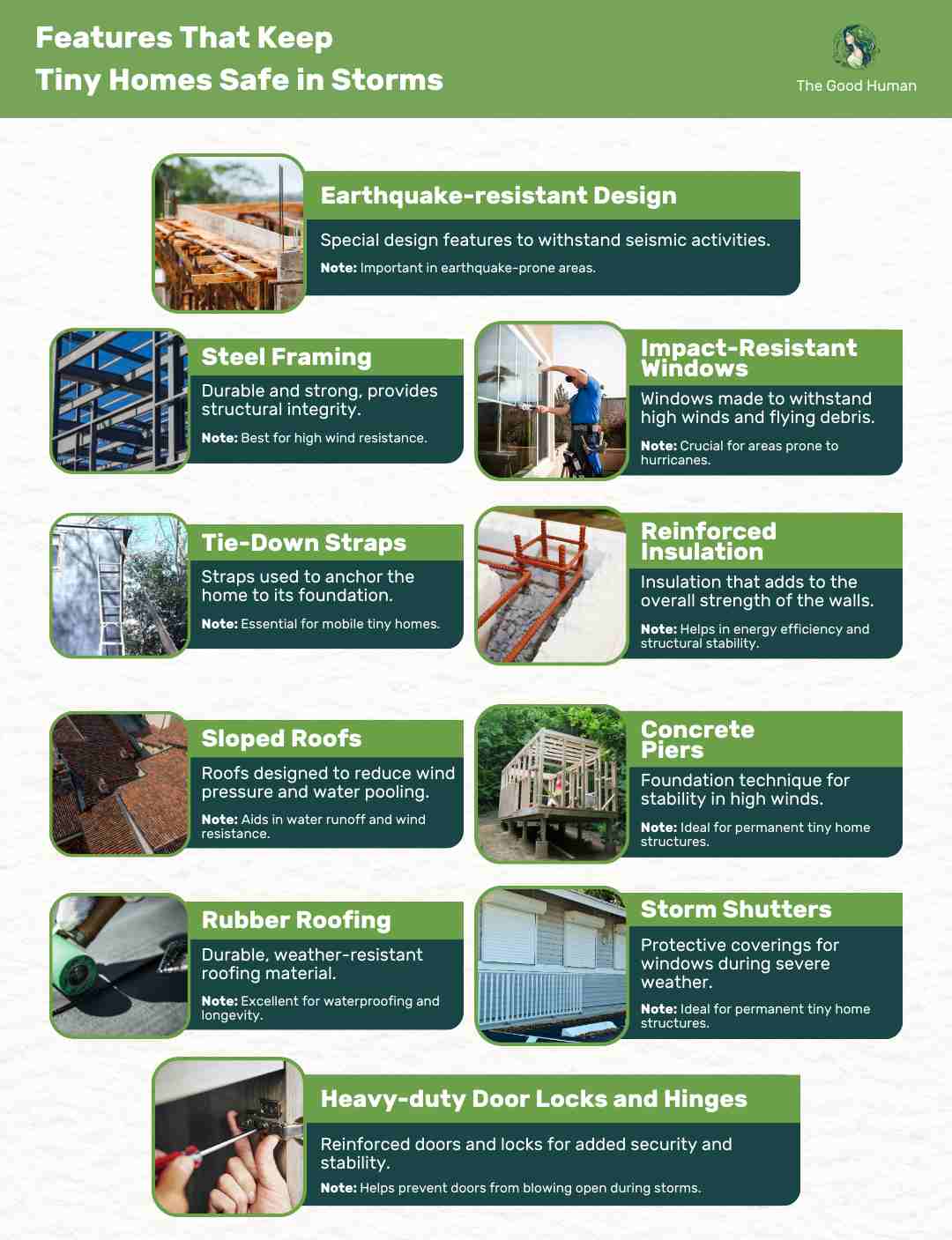
From reinforced foundations to well-insulated walls, every aspect of a tiny home is carefully crafted to provide maximum wind resistance and protect against potential damage.
In addition to structural integrity, tiny homes also incorporate various waterproofing measures and impact-resistant materials. Roofs are often made from durable materials such as metal or rubber, which not only provide excellent water resistance but also offer enhanced protection against falling debris during storms.
Windows and doors are typically designed with tempered glass or other impact-resistant materials, minimizing the risk of breakage from high winds or flying objects.
Proper anchoring is critical, especially in areas prone to high winds or severe weather conditions. Anchoring prevents the tiny homes from being lifted or knocked over, a significant risk given their lighter structures compared to traditional homes.
Common Misconceptions About Tiny Home Safety
Many people assume that because of their size, tiny homes may not have the same level of safety measures or durability concerns as traditional houses. However, this is far from the truth. In fact, tiny home builders take great care in ensuring that these compact dwellings are designed to withstand harsh weather elements.
One of the biggest misconceptions is that tiny homes lack the necessary weather resistance. This couldn’t be further from reality.
Tiny home builders often use high-quality materials such as steel frames and reinforced insulation to provide excellent weatherproofing. These protective measures ensure that your tiny home can endure heavy rain, strong winds, and even extreme temperatures without compromising its structural integrity.
Furthermore, it is important to note that safety measures are not compromised in tiny homes either. Just like any other house, tiny homes adhere to building codes and regulations to guarantee occupant safety during storms or other emergencies.
Why Should You Prioritize Anchoring Your Tiny Home?
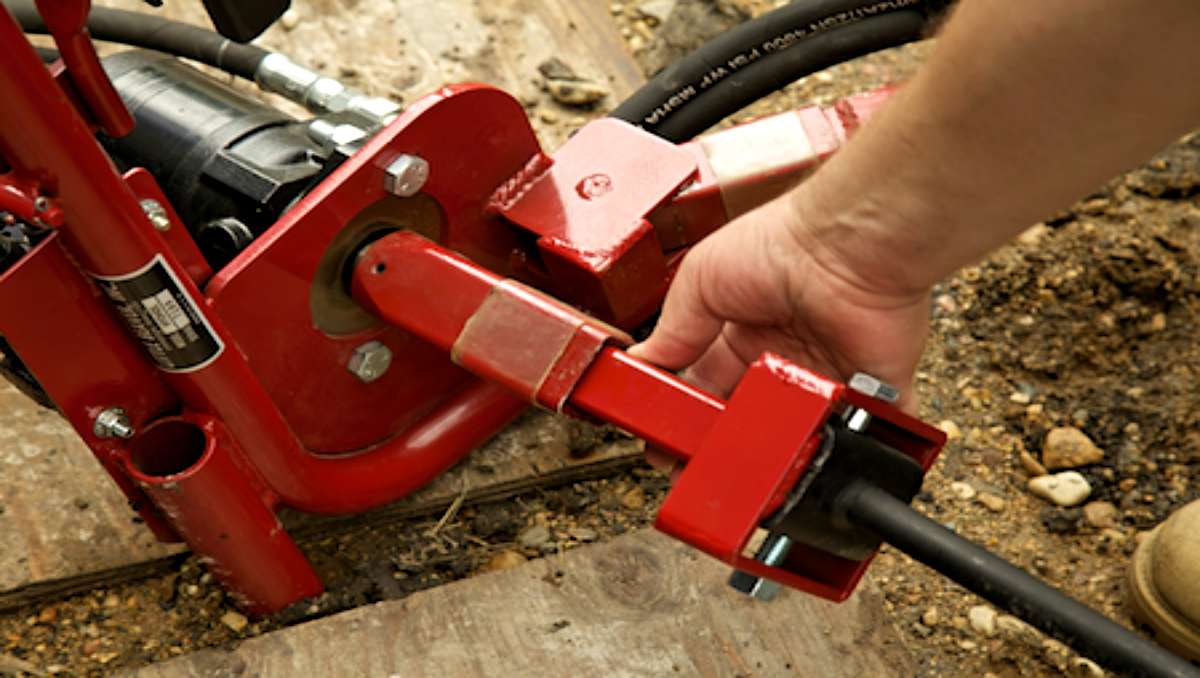
The importance of anchoring a tiny house cannot be overstated, especially in the context of ensuring its safety during storms. Anchoring refers to the process of securely fastening the tiny home to its foundation or the ground, which is a critical safety measure in areas prone to high winds or severe weather conditions.
Now, why is anchoring crucial?
Prevents Uprooting in High Winds
The lightweight nature of many tiny homes, particularly those built on wheels (THOWs), makes them susceptible to being lifted or shifted by strong winds. Proper anchoring counters this risk by firmly holding the home in place.
Stability During Storms
In storm-prone regions, the stability provided by anchoring can be the difference between a home remaining intact or suffering significant damage. This is especially true in areas prone to tornadoes, hurricanes, or heavy windstorms.
Meeting Building Codes and Safety Standards
Adhering to local building codes often requires the implementation of specific anchoring techniques. These codes are designed with tiny home’s safety in mind, ensuring that it can withstand environmental stresses similar to traditional homes.
Insurance and Liability
Properly anchoring a tiny home may also be a requirement for obtaining insurance coverage. Insurance companies often assess the risk associated with a dwelling, and unanchored homes may be considered high-risk.
Long-term Durability
Beyond immediate storm safety, anchoring contributes to the overall longevity and structural integrity of the home. It helps prevent gradual shifting or settling that can cause long-term damage to the structure.
Methods of Anchoring
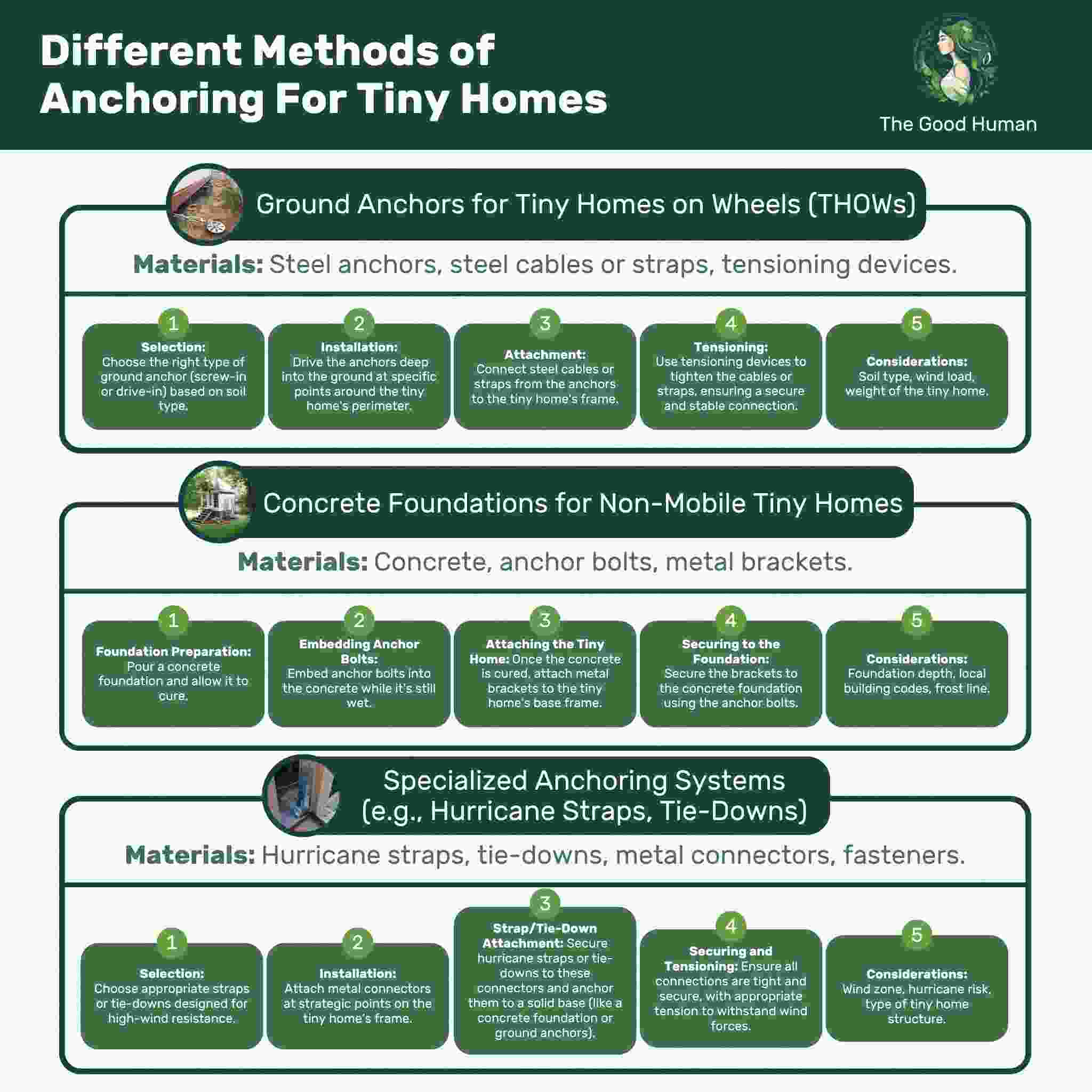
Take note that there are several ways to anchor your tiny homes. Above are 3 of the most effective techniques:
Ground Anchors: These are typically used for THOWs. Ground anchors are driven deep into the ground and attached to the home’s frame, providing a secure hold.
Concrete Foundations: For non-mobile tiny homes, anchoring often involves attaching the house to a permanent concrete foundation. This method is similar to that used in traditional home construction and offers a high level of stability.
Specialized Systems: Depending on the location and the specific risks involved, other specialized anchoring systems might be used. These could include hurricane straps, tie-downs, or other hardware designed to withstand extreme conditions.
Tiny Homes in Different Storm Scenarios
Tiny homes, like any dwelling, face challenges when confronted with different types of storms. Each type of storm – be it heavy rain, tornadoes, or hurricanes – presents unique risks and requires specific preparation strategies.
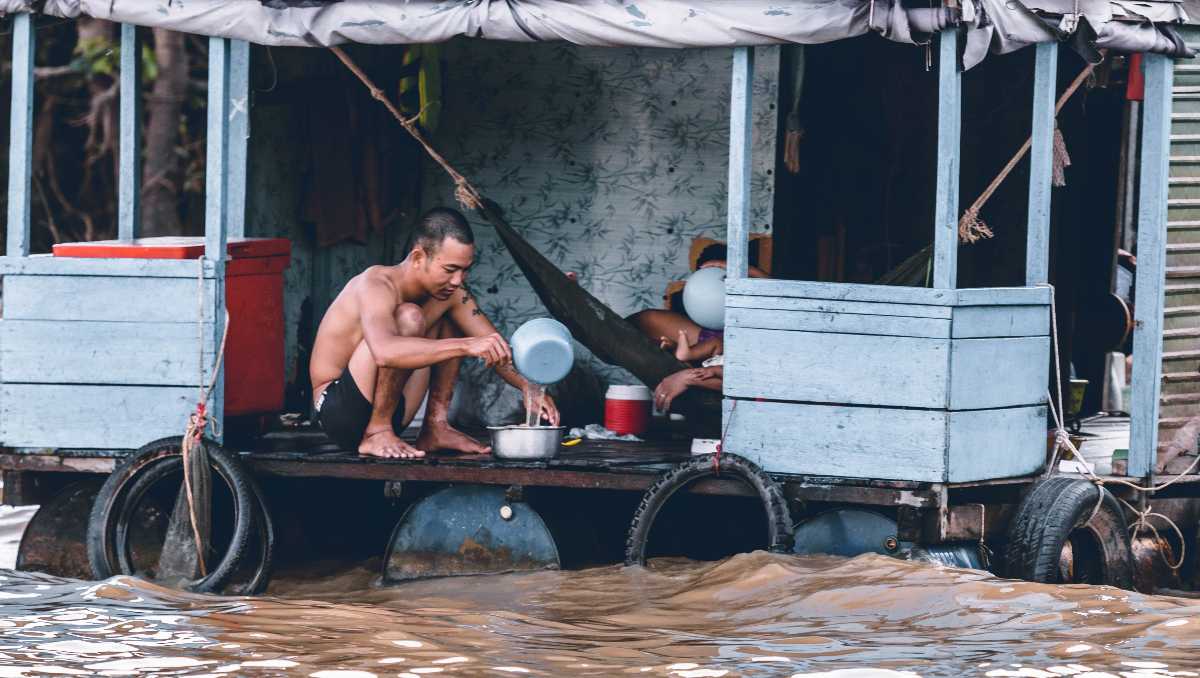
Mild Storms
When it comes to mild storms, tiny homes can generally withstand the weather disturbances. Its sturdy construction and compact size make them less vulnerable to damage. However, it is still important for owners to take protective measures such as securing outdoor items and reinforcing windows and doors to ensure maximum safety during these weather events.
One key factor that contributes to their resilience is the choice of construction materials. Builders often opt for durable and sturdy materials such as steel or engineered wood that can withstand high winds and provide stability during storms.
An important step owners can take to ensure their well-being during mild storms is to implement protective measures. When it comes to emergency evacuation, it is crucial for tiny home owners to have a well-thought-out plan in place.
Heavy Rain and Flooding
In situations involving heavy rain and flooding, tiny homes face challenges like water damage, mold growth, and electrical damage. These issues, if not addressed promptly, can lead to significant long-term problems.
To mitigate these risks, tiny homes should be built with weather-resistant materials and designed to avoid water accumulation. Owners should also be aware of their home’s susceptibility to flooding based on its location
Tornado Damage
Tornadoes pose a significant threat due to their intense winds and flying debris. The main worry for tiny homes in tornado-prone areas is whether they can withstand these high winds, especially if they are on wheels.
Strategies include anchoring the home securely, using sturdy construction materials, and having a backup shelter plan. Despite their small size, properly anchored and constructed tiny homes have shown resilience against tornadoes.
Hurricane Damage
Hurricanes bring a combination of high winds and heavy rainfall, creating a dual threat of wind and water damage. The mobility of tiny homes on wheels can be an advantage in hurricane-prone areas, allowing them to be moved out of the storm’s path.
Building with hurricane-resistant materials, securing the roof and windows, and having an evacuation plan are crucial. Additionally, staying informed about the hurricane season and weather forecasts is vital for timely action.
Preparing for Storms in Tiny Homes
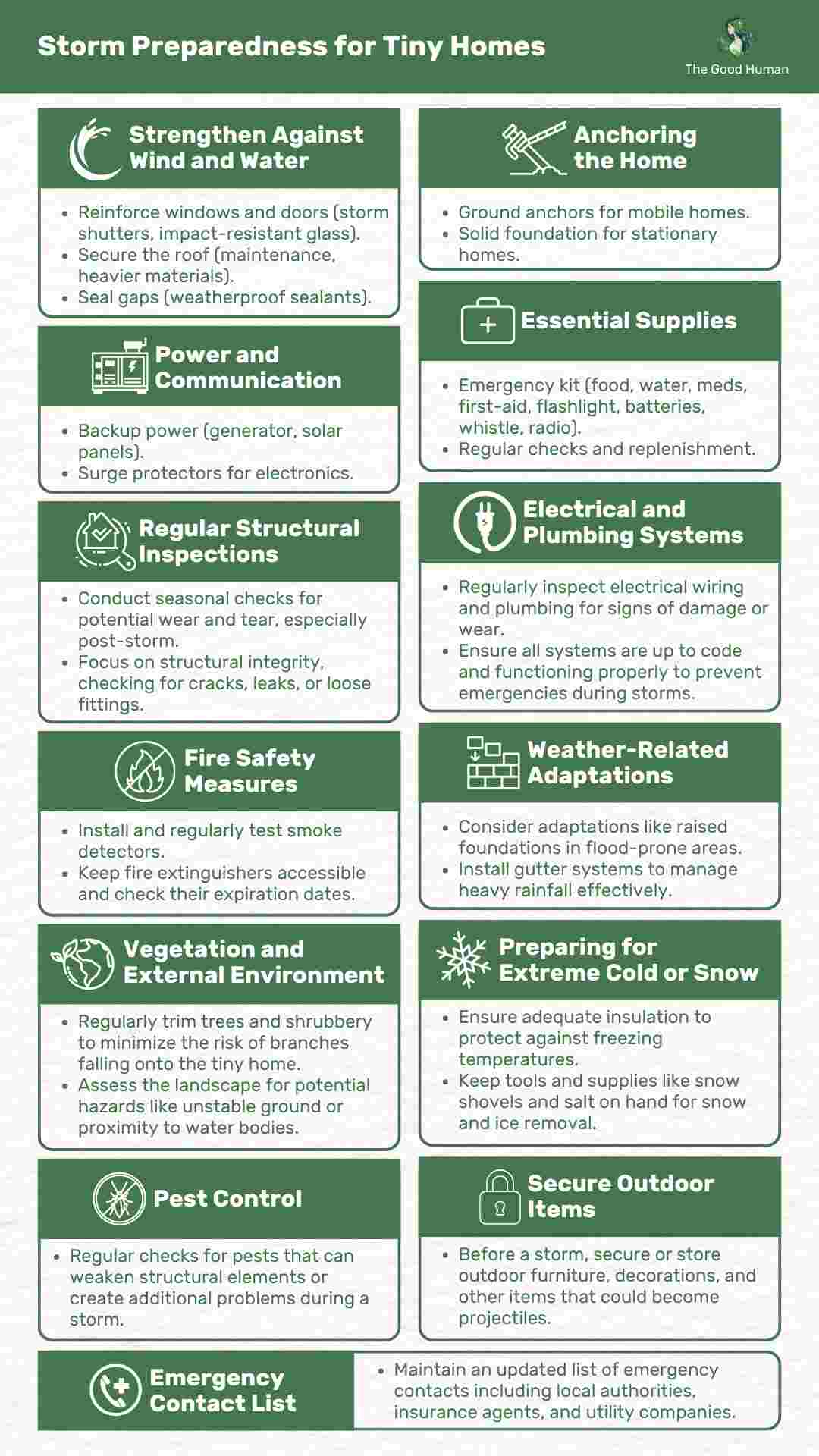
Living in a tiny home requires smart planning and preparation, especially when it comes to weathering storms. The compact size of these homes, while advantageous in many ways, can present unique challenges during severe weather events. Here are key strategies for storm preparedness in tiny homes:
Strengthening Against Wind and Water
Reinforce Windows and Doors: High winds can easily damage windows and doors. Installing storm shutters or using impact-resistant glass can provide crucial protection against flying debris.
Secure the Roof: The roof is often the most vulnerable part of any structure during a storm. Ensuring that it is well-maintained, with no loose shingles or tiles, is critical. Some homeowners opt for heavier roofing materials for added stability.
Seal Gaps: Apply weatherproof sealants around windows and doors to prevent water seepage, a common issue during heavy rains.
Anchoring the Home
Ground Anchors for Mobile Homes: Tiny homes on wheels should be anchored to the ground to prevent them from being overturned by strong winds.
Solid Foundation for Stationary Homes: For tiny homes that are not mobile, anchoring to a solid foundation is key to ensuring stability during storms.
Power and Communication
Backup Power: Equip your tiny home with a generator or solar panels to ensure you have power during outages.
Surge Protectors: Use surge protectors to safeguard electronics and appliances from power surges during storms.
Stocking Essential Supplies
Emergency Kit: Keep an emergency kit stocked with non-perishable food, water, medications, and a first-aid kit. Also include a flashlight, extra batteries, a whistle, and a battery-powered radio for updates.
Regular Checks: Consistently check and replenish your emergency supplies to ensure readiness at all times.
Maintenance and Safety Checks
Routine Inspections: Regularly inspect your home for any structural weaknesses and address them promptly. Do not forget to maintain and check regularly your tiny home’s plumbing and electric systems.
Tree Maintenance: Keep the area around your tiny home clear of overhanging branches or dead trees that could fall and cause damage during a storm.
Evacuation and Awareness
Evacuation Plan: Have a clear and practiced evacuation plan. Know your routes and have a predetermined safe location to go to if needed.
Stay Informed: Keep abreast of weather updates and heed evacuation warnings when issued.
Ensuring Insurance and Compliance
Insurance Coverage: Review and understand your insurance policy, ensuring it covers storm-related damages.
Adhering to Building Codes: Ensure your tiny home is built in compliance with local building codes, particularly those related to weatherproofing and storm safety.
By implementing these measures, residents of tiny homes can significantly improve their safety during storms, ensuring both their well-being and the integrity of their home.
Key Safety Precautions for Tiny Home Owners
Ensuring the safety of tiny home owners during storms involves taking key precautions.
- Always consider fire safety. Make sure your tiny home is equipped with smoke detectors and fire extinguishers, and regularly check and maintain them.
- Avoid using open flames or candles inside your tiny home, as they can easily cause a fire in the event of a storm.
- To strengthen your tiny home’s structure, consider reinforcing the foundation and walls with additional support beams or braces. It is also a good idea to consult with an engineer or construction professional who specializes in tiny homes to ensure that your structure can withstand storms.
- Emergency evacuation planning should not be overlooked. Create an evacuation plan specific to your tiny home that includes designated safe areas nearby where you can seek shelter during a storm.
- Consider using impact-resistant windows, reinforced doors, and durable roofing materials that are designed to withstand strong winds and heavy rain.
- Don’t forget about insurance coverage for your tiny home. Ensure you have adequate insurance that covers any potential damage caused by storms or other natural disasters.
Tiny Home Safety: Weathering the Storm
In conclusion, it is important to consider the safety of tiny homes in storms. While these small dwellings can offer a unique and minimalist lifestyle, they also pose certain challenges when it comes to severe weather conditions.
With proper precautions and planning, tiny home owners can still enjoy a safe living environment even during storms.

